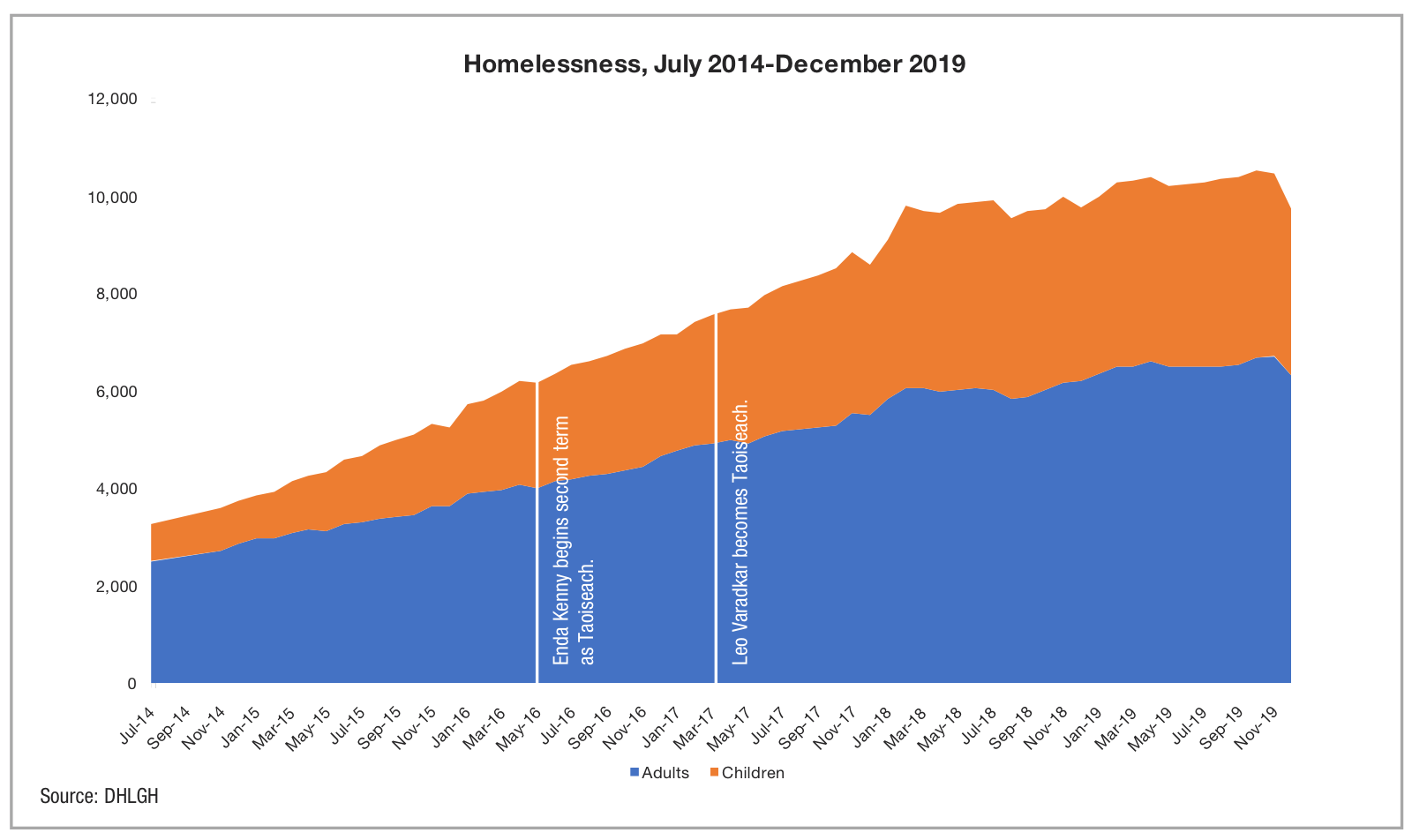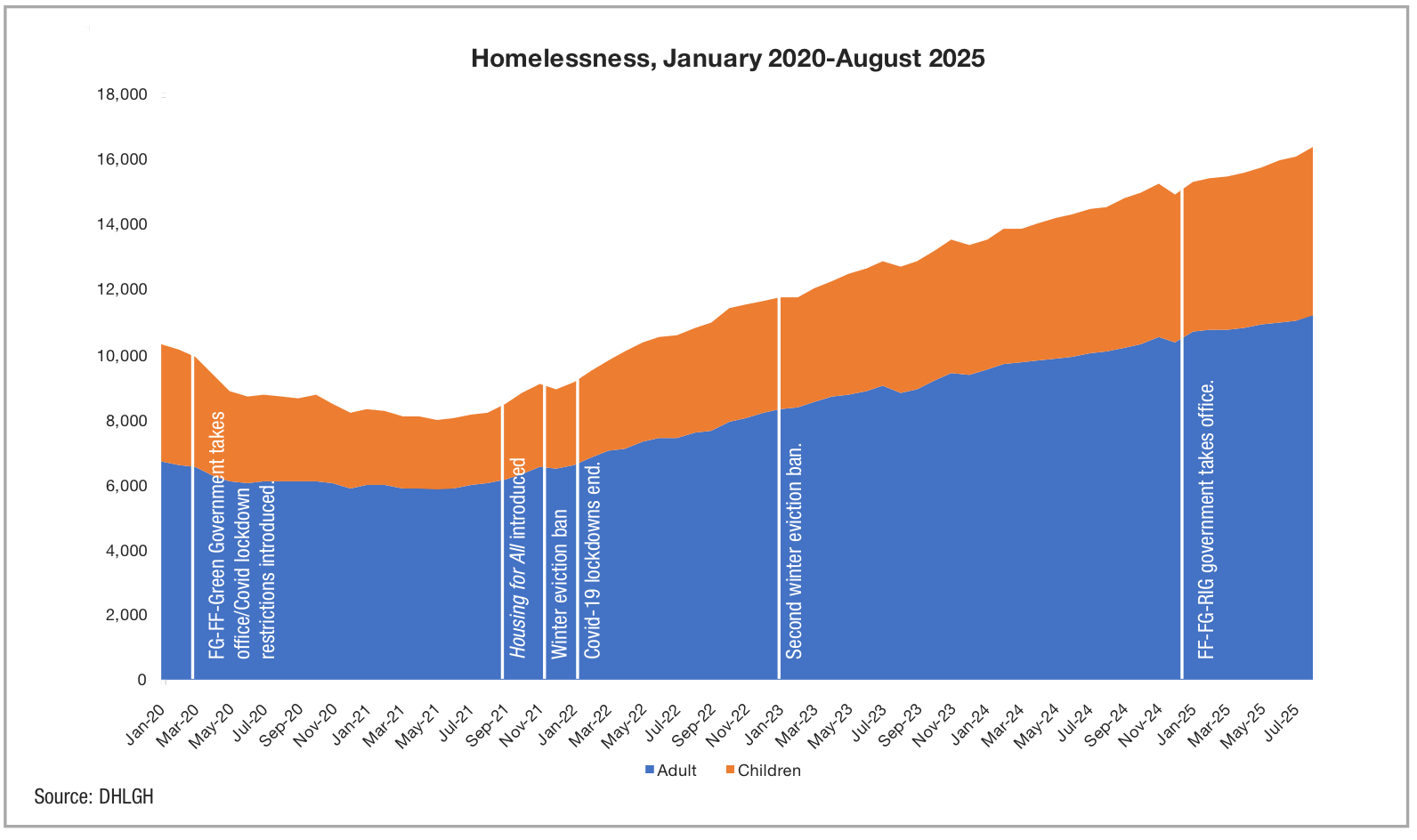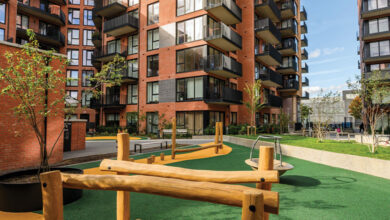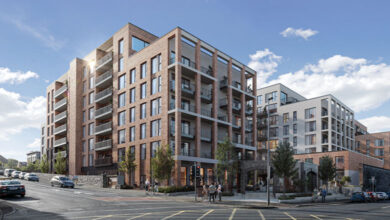Record homelessness
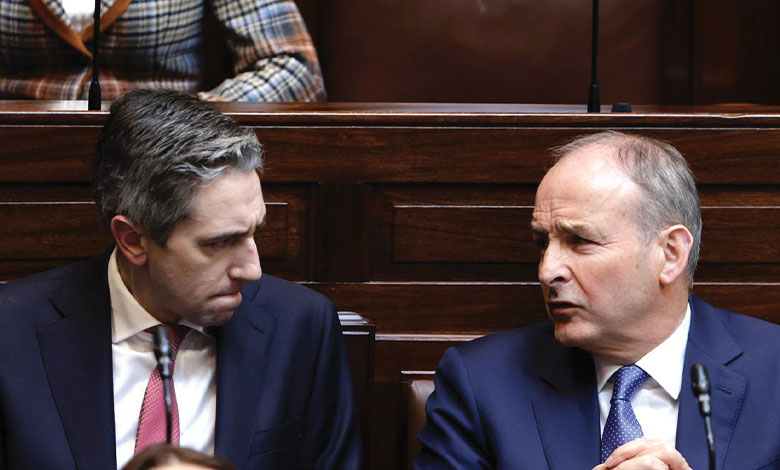
Over an 11-year period, homelessness in Ireland has more than quadrupled, with child homelessness growing at nearly twice the rate of the overall total.
Since the new government was formed in January 2025, there has been a 5 per cent increase in homelessness, with a new record having been set for homelessness in every month since the Fianna Fáil-Fine Gael-Regional Independents coalition took office.
The latest figures show that there are 16,353 people living in emergency accommodation in the State, the Government’s official metric for measuring homelessness.
A notable delineation from previous trends has been the increase in child homelessness, with the number of children in emergency accommodation having increased by 12 per cent in the same time period. This means that hundreds of families have been pushed into emergency accommodation in 2025.
The number of single adults in homelessness saw a negligible decrease of 0.28 per cent. This indicates that the systemic pressures in 2025 are disproportionately affecting families with children, likely due to evictions from the private rental sector where families struggle to find affordable alternative homes that are large enough.
Long-term data shows that while temporary measures like the eviction bans over the Covid-19 pandemic and the temporary winter eviction ban of November 2022 to March 2023 proved effective in providing short-term relief. The long-term trend indicates systemic challenges in the Irish housing market that have not been resolved.
Long-term trends
The Department of Housing, Local Government and Heritage has released monthly homelessness data since July 2014.
The first homeless report showed that, in July 2014, there were 2,509 homeless adults in the State, as well as 749 children.
In August 2025, the number of homeless adults stood at 11,208, while the number of homeless children stood at 5,145. This means that in the space of 11 years, in spite of the fact that Ireland has experienced unprecedented economic growth and record employment, homelessness among adults has increased by 347 per cent and the number of homeless children has increased by 587 per cent.
The data shows that there has been a relentless upwards trend in homelessness, with a significant dip in 2020 amid the Covid-19 pandemic and the eviction plan which took place in that time period.
Between March 2020 and early 2021, driven by a national ban on evictions and increased government supports. The total number fell from 6,552 in March 2020 to a low of 5,843 in May 2021. However, once the eviction ban was lifted, the numbers resumed their sharp upward trajectory, accelerating rapidly through 2022 and 2023.
In addition, the proportion of children within the homeless population has grown significantly. In July 2014, children made up 30 per cent of the total.
However, by August 2025, they made up 46 per cent of the total, thereby suggesting that the increase in homelessness is linked to the ever-rising prices in the private rental market.
This dataset paints a stark picture of a deepening social crisis in Ireland. Over an 11-year period, homelessness has more than quadrupled, with child homelessness growing at nearly twice the rate of the overall total.
While temporary measures like the eviction ban proved effective in providing short-term relief, the long-term trend indicates systemic challenges in the State’s housing market that have not been resolved, meaning that fundamental reform is required if the trend of ever-increasing homelessness records is to be reversed.
